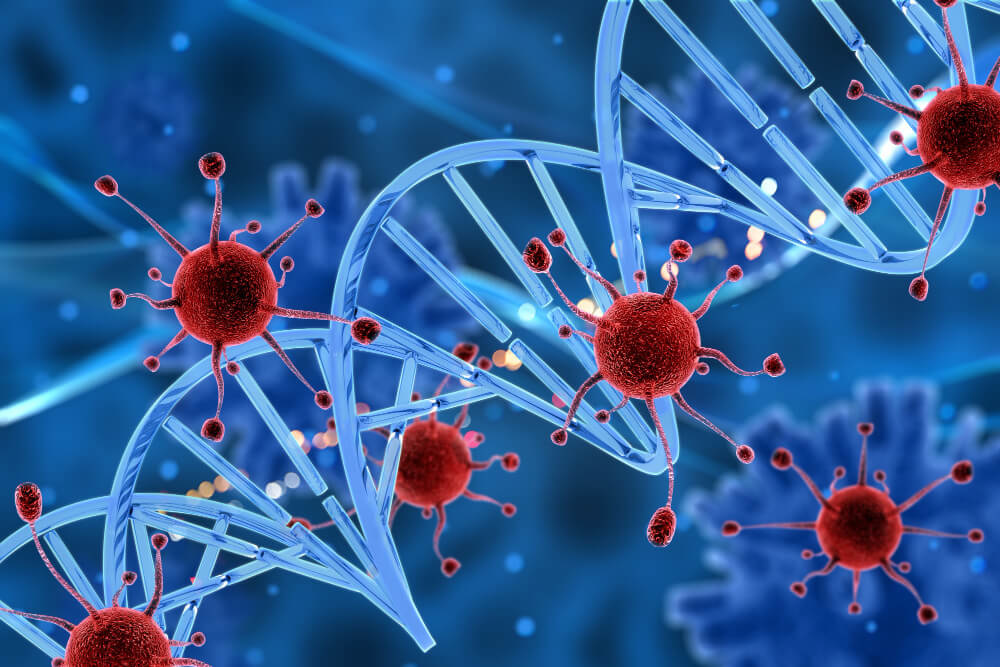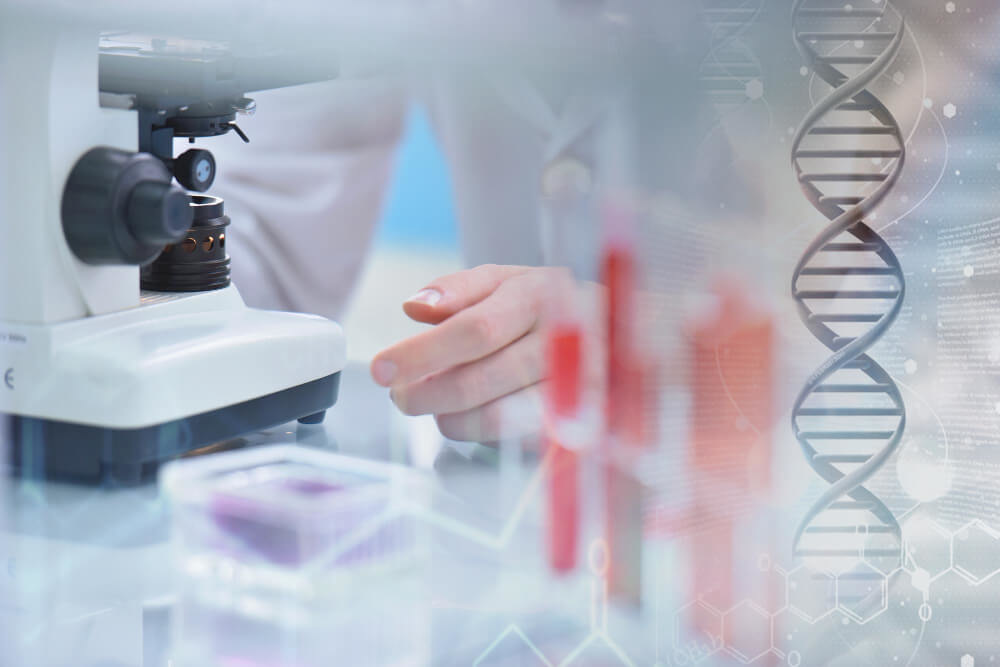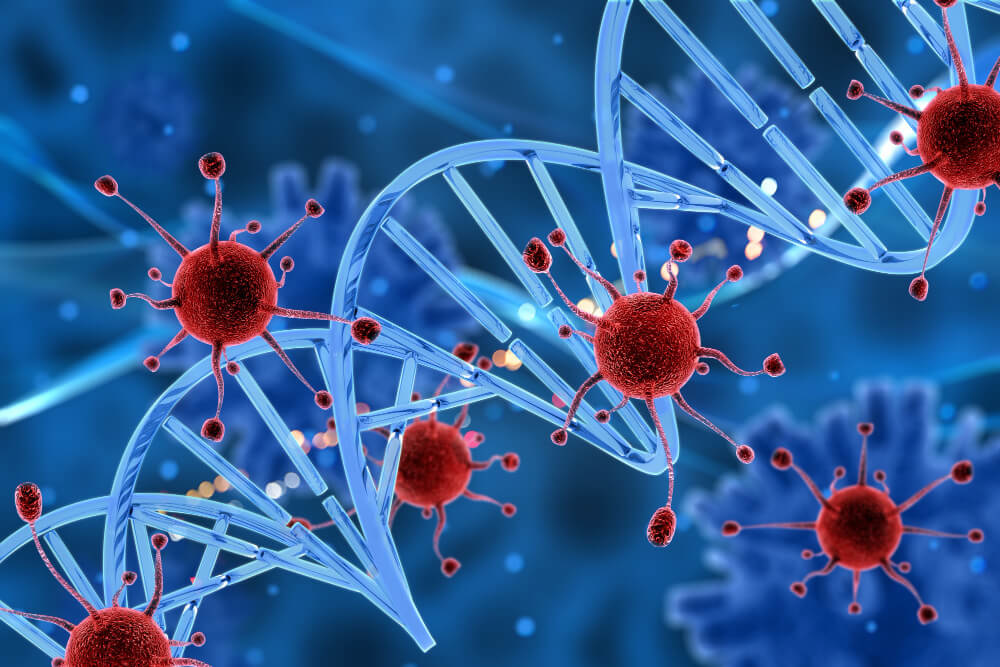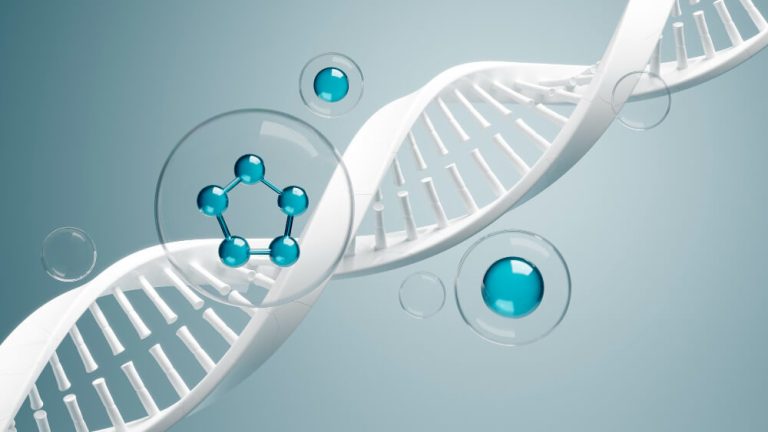What is Longevity Medicine and Can It Redefine Aging?
For most of human history, medicine has operated on a reactive model. We wait for something to break, a symptom to appear, or a disease to be diagnosed, and then we work to fix it. This approach has saved countless lives and extended our average lifespan dramatically. But what if we could shift the focus from treating sickness to proactively cultivating wellness? What if we could aim not just to live longer, but to live better for longer?
This is the revolutionary promise of a rapidly advancing field. It is a paradigm shift that moves beyond the traditional boundaries of healthcare to focus on the underlying processes of aging itself. At its core, longevity medicine is a specialized, data-driven branch of preventive medicine designed to extend a person’s healthspan, the period of life spent in good health, free from chronic disease and disability.
Instead of waiting for the check engine light to come on, longevity medicine aims to keep the engine running in peak condition for as long as possible. It uses cutting-edge diagnostics, personalized interventions, and a deep understanding of cellular biology to slow, and in some cases even reverse, the biological aging process. It is about empowering individuals with the knowledge and tools to take control of their health trajectory.

What’s the Difference Between Healthspan and Lifespan?
To truly grasp the mission of longevity medicine, it is essential to understand the distinction between lifespan and healthspan. These two terms are often used interchangeably, but they represent vastly different concepts and goals.
Lifespan is simple. It is the total number of years you are alive, from birth to death. For the last century, conventional medicine has been incredibly successful at extending our average lifespan. We have antibiotics, surgeries, and treatments for diseases that were once a death sentence.
Healthspan, however, is a measure of quality, not just quantity. It refers to the years of your life that you are healthy, vibrant, and functional. It is the time you spend free from the burden of chronic diseases like heart disease, diabetes, cancer, and neurodegenerative disorders. It’s about having the physical energy and cognitive clarity to enjoy your passions, connect with loved ones, and engage fully with the world.
The unfortunate reality for many is that a significant gap exists between their lifespan and their healthspan. The final decade or more of life is often marked by declining health, multiple chronic conditions, and a loss of independence. The primary goal of longevity medicine is to close that gap, to make our healthspan equal our lifespan.

What Are the Core Principles of Longevity Medicine?
Longevity medicine is not a single magic pill or a secret fountain of youth. It is a comprehensive and personalized system built on a foundation of scientific principles. It integrates several key areas to create a holistic strategy for optimizing health and slowing the aging process. These can be thought of as the essential pillars of a long and healthy life.

How Are Advanced Diagnostics Used?
This field is fundamentally data-driven. A longevity practitioner does not guess; they measure. Before any intervention is recommended, a deep and comprehensive picture of an individual’s unique biology is created. This goes far beyond the standard blood panel you might get at an annual physical.
Advanced diagnostics can include whole-genome sequencing to understand your genetic predispositions to certain conditions and how you might respond to various nutrients and drugs. It involves deep biomarker analysis, looking at hundreds of markers for inflammation, metabolic health, hormone levels, and nutrient status. This provides a high-resolution snapshot of your current biological state.
Other tools include epigenetic clocks, which measure your biological age as opposed to your chronological age by looking at methylation patterns on your DNA. Advanced imaging can be used to detect plaque in arteries or changes in organ structure long before symptoms arise. This wealth of data allows for the creation of a truly personalized health roadmap, targeting your specific weaknesses and amplifying your strengths.

What Role Does Nutrition Play?
It is no surprise that what you eat is a cornerstone of longevity. But the approach goes beyond generic advice like ‘eat more vegetables’. It focuses on precision nutrition tailored to an individual’s genetics, metabolism, and health goals. The central theme is often cellular stress management through diet.
One of the most studied dietary interventions for longevity is caloric restriction, or CR. Consistently eating fewer calories without malnutrition has been shown in numerous animal models to extend lifespan and healthspan. However, long-term, severe caloric restriction is extremely difficult for most people to maintain.
This has led to immense interest in dietary patterns that create similar benefits, such as intermittent fasting or time-restricted eating. These approaches cycle between periods of eating and fasting, which can activate cellular cleanup processes known as autophagy and improve metabolic flexibility. For those who find even these strategies challenging, science is exploring compounds that can trigger the same beneficial pathways without the need for strict fasting. These are known as caloric restriction mimetics, and they represent an exciting frontier in nutritional science.
Beyond just timing and calories, the specific composition of the diet is critical. Practitioners often emphasize a plant-forward diet rich in polyphenols, healthy fats, and high-quality protein to support muscle mass, while minimizing processed foods, sugar, and inflammatory agents.

Why Is Exercise So Critical?
If there were a single intervention that could be bottled and sold as a longevity drug, it would be exercise. Its benefits are profound and impact nearly every hallmark of aging. Longevity-focused exercise protocols are designed to optimize for metabolic health, preserve muscle mass, maintain bone density, and enhance cardiovascular function.
Most protocols emphasize a mix of different types of exercise. Zone 2 cardio, which is low-intensity steady-state exercise where you can still hold a conversation, is crucial for improving mitochondrial efficiency. The mitochondria are the power plants of our cells, and their dysfunction is a key driver of aging.
Resistance training is non-negotiable for combating sarcopenia, the age-related loss of muscle mass and strength. Maintaining muscle is not just about looking good; muscle is a metabolic organ that helps regulate blood sugar and releases anti-inflammatory signaling molecules. High-intensity interval training (HIIT) is also used to powerfully stimulate cardiovascular and metabolic adaptations.
A well-rounded exercise plan is a powerful tool for maintaining physical autonomy and resilience as you age. It is one of the most effective ways to ensure your body remains a capable and reliable vehicle for your mind and spirit.

What About Supplements and Therapies?
While diet and exercise are the foundation, targeted supplementation and therapeutics can play a significant supportive role. This pillar is perhaps the most rapidly evolving, with new research emerging constantly. It is also the area that requires the most careful guidance from a knowledgeable practitioner.
Supplements are recommended based on the diagnostic data. This could mean correcting a vitamin D deficiency, optimizing omega-3 fatty acid levels, or using specific compounds to support mitochondrial health, like CoQ10 or PQQ. Other popular molecules in the longevity space include NAD+ precursors, which support cellular energy and repair, and senolytics, which are compounds designed to clear out dysfunctional ‘zombie’ cells that accumulate with age.
Hormonal balance is another key area of focus. As we age, levels of crucial hormones like estrogen, testosterone, and growth hormone decline. Restoring these to more youthful levels through bioidentical hormone replacement therapy (BHRT) can have a significant impact on energy, body composition, and overall well-being. Optimizing thyroid function is also paramount, as the thyroid acts as the master regulator of metabolism. Clinicians in this space often use detailed thyroid optimization protocols to fine-tune this critical system.

How Does Longevity Medicine Address the Hallmarks of Aging?
In 2013, a landmark scientific paper identified nine key biological processes that are considered the ‘hallmarks of aging’. These are the fundamental mechanisms that drive the aging process at a cellular and molecular level. Longevity medicine is uniquely focused on targeting these hallmarks directly.
These hallmarks include concepts like genomic instability, which is the accumulation of damage to our DNA over time. Another is cellular senescence, where cells stop dividing and enter a zombie-like state, secreting inflammatory signals that damage surrounding tissues.
Mitochondrial dysfunction, the decay of our cellular power plants, leads to an energy crisis within the body. Epigenetic alterations, or changes to how our genes are expressed, can turn on harmful genes and turn off protective ones. Other hallmarks include altered intercellular communication, loss of proteostasis (the ability to maintain healthy proteins), and stem cell exhaustion.
Every pillar of longevity medicine is designed to counteract one or more of these hallmarks. For example, exercise boosts mitochondrial health. Caloric restriction and related strategies promote the clearance of senescent cells. Targeted supplements can support DNA repair and healthy protein function. By addressing the root causes of aging, the goal is to prevent the downstream consequences we know as age-related diseases.

What Does a Longevity Doctor Actually Do?
A consultation with a longevity-focused physician is a very different experience from a typical doctor’s visit. The initial appointment is usually much longer and more in-depth, focusing on your entire life story, not just your immediate symptoms. The goal is to build a comprehensive picture of your genetics, lifestyle, environment, and personal health goals.
Following this deep dive, the doctor will order the extensive diagnostic tests mentioned earlier. The follow-up visit is dedicated to reviewing this vast amount of data. This is where the expertise of the physician is critical. They must translate complex biological information into a clear, actionable plan for the patient.
This process requires a unique skill set. It’s one thing to understand the science, but it’s another to explain it in a way that is empowering and not overwhelming. A key part of the practice is knowing how to communicate complex longevity science effectively, building a partnership with the patient to co-create their health journey.
The resulting plan is not static. It is a dynamic strategy that involves regular follow-up testing to track progress and adjust interventions as needed. The relationship is a long-term collaboration aimed at continuous health optimization.

What Are the Global and Institutional Perspectives on Healthy Aging?
The shift towards prioritizing healthspan is not a niche movement. It is a global imperative recognized by the world’s leading health organizations and research institutions. The economic and social burden of an aging population suffering from chronic disease is staggering, and proactive prevention is the only sustainable solution.
The World Health Organization is actively promoting this shift through its global strategy known as the Decade of Healthy Ageing. This initiative aims to foster a world where everyone can live a long and healthy life by transforming health systems and enabling environments that support well-being at all ages.
Prestigious academic institutions are pouring resources into this field, establishing dedicated centers to unravel the mysteries of aging. The Stanford Center on Longevity is a prominent example, working to use science and technology to improve the quality of long lives. Similarly, leading medical centers are creating specialized research divisions, such as the Johns Hopkins Center for Transformative Geriatric Research, to accelerate discoveries that can be translated into clinical practice.
Even a renowned institution like the Mayo Clinic provides extensive resources and practical tips for healthy aging, acknowledging the power of lifestyle choices in shaping our later years. This broad consensus underscores the legitimacy and importance of focusing on the biology of aging as the next great frontier in medicine.

What Is the Future of Aging?
While the principles discussed here are already being applied today, the future of longevity medicine is even more exciting. The pace of discovery is accelerating, and technologies that were once science fiction are now on the horizon.
Gene therapies and editing tools like CRISPR may one day correct genetic defects that predispose us to disease or accelerate aging. Advances in regenerative medicine hold the promise of repairing or replacing damaged tissues and organs using our own stem cells. Artificial intelligence will play an increasingly important role, analyzing massive datasets to identify new longevity pathways and create even more precise, personalized health predictions and interventions.
The ultimate vision is a future where age is just a number, not a predictor of decline. It is a future where our 80s and 90s can be as active, engaged, and meaningful as our 40s and 50s. Longevity medicine is not about achieving immortality; it is about adding life to our years, not just years to our life.
This new medical frontier offers a message of profound hope and empowerment. It tells us that aging is not a passive process we must simply endure. It is a biological process that we can understand, measure, and, most importantly, influence. By embracing its principles, we can become active architects of our own long, healthy, and fulfilling lives.
Frequently Asked Questions

How can I know if my mitochondria are functioning poorly?
The most common signs of poor mitochondrial function are often pervasive and can be mistaken for normal aging or stress. Persistent fatigue that isn’t resolved with rest, a noticeable decline in physical stamina, and brain fog are hallmark indicators of inefficient cellular energy production. Because every cell relies on mitochondria, these symptoms reflect a systemic energy deficit that can impact your daily quality of life.
While there are advanced clinical tests, you can also look for other clues like slow recovery after exercise, unexplained muscle weakness, or a decreased tolerance to cold. These signs suggest your body is struggling to generate the energy required for basic repair and thermoregulation. If these symptoms are chronic and concerning, consulting with a healthcare professional can help rule out other conditions and provide a clearer picture of your cellular health.

Is it possible to reverse existing mitochondrial damage, or only prevent further decline?
Current science shows that it is possible to significantly improve mitochondrial function and even stimulate the creation of new, healthy mitochondria, a process called mitochondrial biogenesis. Your body also has a natural quality control system called mitophagy, which identifies and removes damaged mitochondria to make way for healthier ones. Lifestyle interventions like specific types of exercise and nutrition can powerfully enhance both of these renewal processes, leading to a tangible reversal of dysfunction.
However, the primary goal for longevity is to both improve current function and slow the rate of future decline. While you can make remarkable improvements, preventing further damage through consistent, healthy habits is the most effective long-term strategy. Think of it less as a one-time fix and more as a continuous process of clearing out damage and protecting your cellular powerhouses for the future.

Besides diet and exercise, what are some less obvious factors that impact mitochondrial health?
Your sleep quality and exposure to light play a crucial role in regulating mitochondrial function. During deep sleep, your body performs critical cellular cleanup, including the removal of damaged mitochondria. Disrupted sleep or exposure to blue light at night can interfere with your circadian rhythm, directly impairing these essential repair processes and stressing your energy systems.
Furthermore, managing chronic stress and practicing deliberate temperature exposure can have a profound impact. Chronic stress elevates cortisol, which can damage mitochondria over time, whereas stress-management techniques can protect them. Intermittent exposure to cold, through methods like cold showers, acts as a beneficial stressor that triggers the production of new and more efficient mitochondria to meet the increased energy demand for warmth.
Discover the most comprehensive functional medicine training, longevity training, and biohacking certification programs designed specifically for healthcare professionals, medics, and clinic owners who want to master regenerative medicine protocols and anti-aging therapies.







